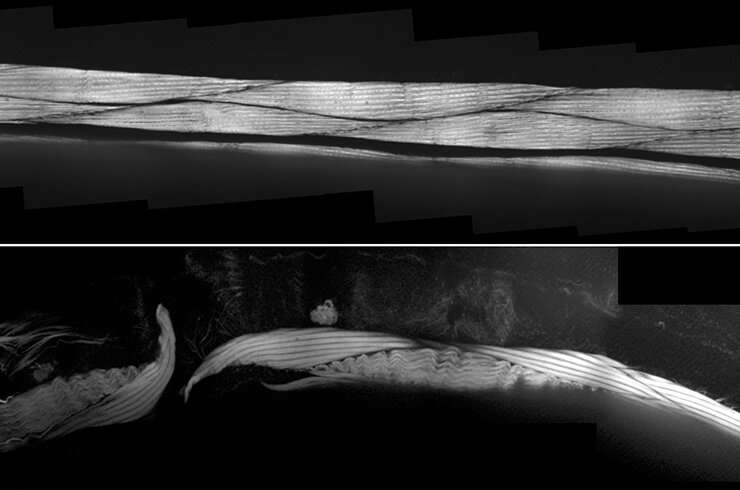A histone modification essential for tissue integrity

Chemical modifications of histones, the small proteins around which DNA is wrapped, are known to affect gene expression. In a study conducted in C. elegans, researchers from the Gasser group show that the defining modification of the tightly packed form of DNA called heterochromatin selectively blocks the expression of genes in differentiated tissues. The loss of the enzyme that mediates this modification leads to a loss of tissue integrity and early aging.
Histone methylation is a process by which methyl groups are transferred to select amino acids of histones, the proteins that act as spools around which DNA winds to create the structural units called nucleosomes. The methylation of lysine 9 in histone H3 (H3K9me), an example of histone methylation, is the key modification that defines heterochromatin, a tightly packed form of DNA that is most commonly found on repetitive "junk" DNA. Heterochromatin is also thought to silence tissue-specific genes during development, however it has been poorly characterized how this is achieved.
Stephen Methot and Jan Padeken, two postdocs in the former lab of Susan Gasser, investigated the role of H3K9me in the differentiated cells of C. elegans. This worm is very useful for the study of H3K9me thanks to the reduced complexity of its enzymes that add the methyl groups to the histones. In C. elegans, it is possible to study mutants with no H3K9me because they can still develop from embryos to fertile adults.
In the resulting study published in Nature Cell Biology, co-first authors Methot and Padeken show that the loss of H3K9me in worms leads to a tissue specific misexpression of genes. Not only were specific genes aberrantly expressed, but the animals became less mobile and were short-lived. The scientists showed that in the absence of H3K9me, cell-type specific transcriptional activators are necessary to drive the misexpression of genes. This occurs primarily at tissue-specific genes whose expression normally occurs in other cell types. For instance, genes that should be expressed in neurons or intestine cells become aberrantly expressed in muscle upon the loss of H3K9me. This histone modification, and the enzyme that mediates it, are therefore essential for ensuring the integrity of differentiated tissues.
Given that inhibitors of the enzymes in charge of the methylation are in clinical trials against cancer, this study provides useful insights that may guide the use of such medications.
More information: Stephen P. Methot et al, H3K9me selectively blocks transcription factor activity and ensures differentiated tissue integrity, Nature Cell Biology (2021). DOI: 10.1038/s41556-021-00776-w
Journal information: Nature Cell Biology


















